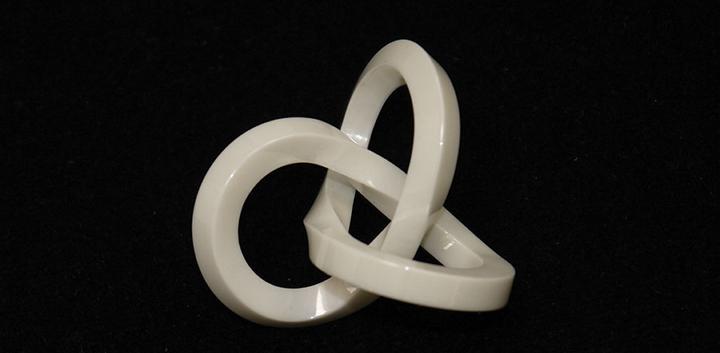 The key drivers for professional applications of 3D printing, particularly when it comes to end-use applications of the technology, are certain to come from the development of materials solutions.
The key drivers for professional applications of 3D printing, particularly when it comes to end-use applications of the technology, are certain to come from the development of materials solutions.
It’s this increased development in 3D printable materials over the last five years which has lead to an ever-larger portfolio of print materials across various industries. With those innovations in materials such as titanium alloys, nickel alloys, carbon and glass filled polyamide powders and resins, support from a range of 3D printing technologies has increased rapidly.
Now SmarTech, via their 3D Printing Materials Advisory Service, has ranked the top three major trends in new 3D printing materials based on the latest developments and research.
The first of those trends may well be the most interesting; high viscosity ceramic pastes which can be used in photopolymerization. The ongoing search for viable ceramic printing solutions has led researchers to the doorstep of refining ceramic applications that use vat photo polymerization systems and photo curable resin compounds containing ceramic powder to result in fully dense ceramic components.
While only a few have found success using the processes, the latest approach involves high-viscosity, UV curable materials in paste form rather than more traditional resin formulations.
Companies like Predawns and 3DCeram are at the leading edge of developing such materials and systems, and the process is aimed at creating additively produced ceramic parts that are likely to impact the dental and aerospace markets in the short term.
While the process will eventually be used in the biomedical and manufacturing sectors, it’s the development of materials that exhibit the sort of thermal performance, conductivity, and strength of ceramics which will ultimately change the market.
These sorts of ceramic paste products range from conductive materials used to form the inner electrode layers of electronics parts using nickel slurry powder, to those like the 3DCeram technology which allows the manufacture of ceramic components without breaking the digital design chain are characterized by work on laser stereolithography conducted by Thierry Chartier, the Director of the Science of Ceramic Processes and Surface Treatments lab in Limoges. 3DCeram has already transformed the process and materials into a production technology.
In that process, a laser that polymerizes a paste composed of photosensitive resin and ceramic. As the parts are heat treated and debinded for sintering to eliminate the resin and densify the ceramic to 100%, the resulting ceramic constructs are directly usable for final applications, and the parts have similar properties to those made by pressing or injection.
The second material trend involves the production of platinum metal formulations for use in powder bed fusion processes. Due to their range of potential benefits to aerospace and medical applications, the corrosion resistance, conductivity, and temperature performance of these platinum materials are at the forefront of precious metal based 3D printing.
Among the most active in the sphere, EOS and their partners, and third-party developers such as Tanaka Holdings, are developing platinum-based metallic glass powders.
The third key trend is taking place in the creation of carbon reinforced polymers used in selective laser sintering processes.
Among the key movers in that field are Oxford Performance Materials, who via their OXFAB-ESD carbon reinforced powder material, are applying the processes to aerospace applications. Similar products which feature graphite reinforced polymers are being used in automotive applications.
If you’d like more information about the SmarTech 3D Printing Materials Advisory Service or to obtain the full report, you can find that here.
What do you think about these innovations in 3D printing and additive manufacturing materials development? Let us know in the 3D Printing Materials Innovations forum thread on 3DPB.com.
Subscribe to Our Email Newsletter
Stay up-to-date on all the latest news from the 3D printing industry and receive information and offers from third party vendors.
You May Also Like
3D Printing Unpeeled: New Arkema Material for HP, Saddle and Macro MEMS
A new Arkema material for MJF is said to reduce costs per part by up to 25% and have an 85% reusability ratio. HP 3D HR PA 12 S has been...
3D Printing News Briefs, January 20, 2024: FDM, LPBF, Underwater 3D Printer, Racing, & More
We’re starting off with a process certification in today’s 3D Printing News Briefs, and then moving on to research about solute trapping, laser powder bed fusion, and then moving on...
3D Printing Webinar and Event Roundup: December 3, 2023
We’ve got plenty of events and webinars coming up for you this week! Quickparts is having a Manufacturing Roadshow, America Makes is holding a Member Town Hall, Stratafest makes two...
Formnext 2023 Day Three: Slam Dunk
I’m high—high on trade show. I’ve met numerous new faces and reconnected with old friends, creating an absolutely wonderful atmosphere. The excitement is palpable over several emerging developments. The high...
































